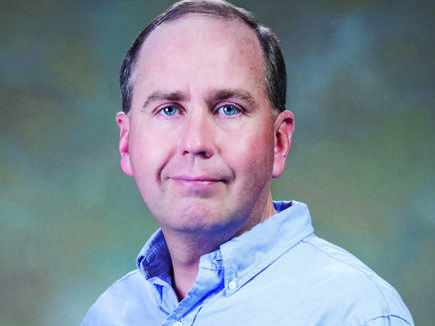Michael Parks
Sandia National Laboratories
Albuquerque, New Mexico
Department: Computational Mathematics
Education: B.S. Computer Science, B.S. Physics, Minor in Mathematics, 1998, Virginia Tech; M.S. Computer Science, 2000, Virginia Tech; Ph.D. Computer Science, 2005, University of Illinois at Urbana-Champaign (CSE degree option)
Career stage: Mid—19 year post Bachelor’s

What He Does
Michael manages a department of approximately 20 computational mathematicians, including staff, postdocs, and student interns. They perform cutting edge research, driven by the needs of the Department of Energy (DOE), to develop the mathematical foundations and the algorithmic and software advances to enable accurate, predictive, and scalable computational simulation methods. He also serves as a program manager for fundamental research projects, mission-driven projects, and industrial partnerships. Michael is also the hiring manager for Sandia’s John von Neumann Postdoctoral Fellowship, and he coordinates his center’s summer intern program. He participates in funding decisions for laboratory-directed research and development projects, helping to determine the lab’s technical research directions.
Necessary Job Skills
Computational science is considered a third pillar of scientific investigation, along with theory and physical experiment. In many cases, a complete descriptive theory does not exist, physical experiments are too expensive or simply impossible to conduct, leaving computational simulation as the only option. Science and engineering research challenges driven by the missions of the DOE require us to push the frontiers of computational simulation.
Pros and Cons Of His Job
Michael’s job offers him the opportunity to work directly with some of the best applied mathematicians and computational scientists at Sandia, other national laboratories, universities, and industry. I can’t imagine working in a more intellectually stimulating environment.
Career Path
Around the time he finished his Ph.D. at the University of Illinois, Michael was recruited by Sandia National Laboratories as a postdoc, and was converted to a member of the technical staff a couple of years later. Many years later he moved into technical management, as it presented the opportunity to do not just his own research, but to enable others to do impactful research as well.
As a graduate student, the national laboratories were not on Michael’s radar as a possible place for employment. During his studies, though, he read a lot of journal articles written by staff at Sandia Labs. He didn’t know what Sandia was at the time, but found their research activities really compelling. When the possibility of a postdoc opened up for him at Sandia, he thought he’d move to the southwest for a couple of years to check out the place before moving on. He found Sandia to be such a wonderful research environment that he’s been there ever since.
Career Expectations and Advice
“Pursue a multidisciplinary education and take some courses outside your degree field.”
The most impactful computational scientists are those who can start from an application problem, understand the relevant physical and mathematical models, develop a discretization and numerical solution, and finally interpret the results back to the driving application problem in an impactful way. This requires skills in mathematical analysis, numerical analysis, computer science, as well as expertise with physical and engineering sciences. In general, no one person has this much breadth and depth—this is why we work in teams. However, it’s helpful to have at least some expertise in all of these areas.
In general, no one person has this much breadth and depth—this is why we work in teams. However, it’s helpful to have at least some expertise in all of these areas.
Salary
From $100,000 to $200,000, depending on education and experience.
Stay Up-to-Date with Email Alerts
Sign up for our monthly newsletter and emails about other topics of your choosing.

